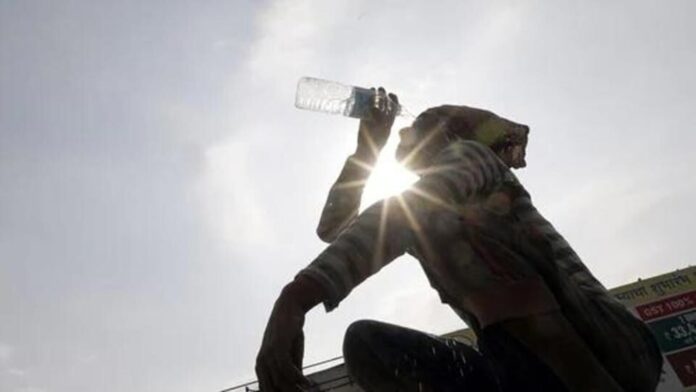The European Court of Human Rights recently ruled in favour of KlimaSeniorinnen (Senior Women for Climate Protection), an association of more than 2,000 Swiss women, all above the age of 64, who had filed a case against the Swiss government for its failure to cut greenhouse gas emissions, which has put them at a greater risk of dying during heatwaves because of their age and gender.
The ruling made the Swiss government accountable for violating its citizens’ Right to Life and Health, and created a binding legal precedent for all 46 countries that are part of the European Convention on Human Rights. The Swiss government, however, argued that decisions on climate policy should be taken by democratically-elected lawmakers, not by courts.
The world has been warming up at an average rate of about 0.2° Celsius per decade since the late 1970s. Europe has emerged as a major climatic hotspot, almost 1° Celsius worse off than the corresponding global increase. A study in Europe that assessed the sex-and age-specific mortality burden during a period of record-breaking temperatures from 30 May to 4 September 2022 found a spike in heat-related deaths in older age groups, especially of women.
A 2014 study in India revealed that more women than men died during a 2010 heat wave in Ahmedabad, when temperatures reached 47.8° Celsius and heat-related hospital admissions of newborns went up by 43%. Arsht-Rock research work in India, Nigeria and the US has forecast that heat could claim the lives of 204,000 women annually across these three countries alone by 2050. In India, in an extremely hot year, the toll may go up to 131,000, which would be about 1.1% of total deaths.
The Swiss ethnologist Elisabeth Stern, an active member of the KlimaSeniorinnen, has urged further research to ascertain the reasons for women’s greater vulnerability to heat waves. A 2018 study in 272 cities in China attributed it to physiological causes, like “greater cardiovascular strain on women” caused by heat. Hein Daanen, a physiology researcher at Free University, Amsterdam, has observed that “sweating is a particularly effective method of cooling, and, women, who have a lower capacity to perspire and evaporate sweat, are at a disadvantage.”
After a 2003 heatwave killed thousands in France, it emerged that many of the victims were elderly women living alone in top-floor apartments, which led some scientists to ask if elderly women may be at higher risk of dying because of social factors like a greater propensity to live in seclusion. Another study on Ahmedabad’s 2010 deadly heatwave (by Rand Corp) pointed out that lack of access to toilets compelled many women to drink less water to avoid relieving themselves outdoors, noting that “women didn’t have the agency to cool themselves down.”
As rising temperatures reduce the quality and length of people’s lives, they cast a shadow on our economic health too. Projections based on a global temperature rise of 1.5° Celsius by the end of this century show that in 2030, 2.2% of the world’s total working hours will be lost to heat.
In situations of extreme heat in countries like the US, India and Nigeria, where unpaid work done by women varies between 40% and 70% of all working hours, and that too mostly in heat-exposed areas, the time taken by such work is likely to get stretched much longer. It could be a whole extra working day per month in the US, 90 more minutes per day in India and 150 additional minutes a day in Nigeria.
Women in these three countries earn at least 24-45% less than men and heat-related income losses will worsen that disparity. Heat-related labour productivity losses are a key reason that average wages in Nigeria have fallen below the minimum wage in women-dominated sectors, affecting 22 million women. In India, where heat-exposed labour accounts for a vast share of the workforce, it is estimated that by 2030, there will be 34 million job losses from productivity declines caused by heat-stress, a large share of a projected 80 million such job losses globally.
As a World Bank report shows, South Asian countries are expected to bear the brunt of the heat-exposure impact. As for India, women are estimated to be at risk of losing 19% of their paid working hours, costing the Indian economy 0.8% of its annual GDP, a loss that could go up to a level which costs the country 1% of its GDP by 2050. A 2023 Cambridge University study showed that since April 2022, almost the entire country had been exposed to increased risks stemming from hunger, loss of income or premature death during heat waves, and 43% of women reported an increase in caregiving work (HomeNet South Asia).
Our climate crisis is now visible in extreme heat, apart from more intense and frequent natural disasters. Life, livelihood and productivity losses are in evidence too. As it always happens, women are at the receiving end of the misery. As nations review the Gender Action Plan this year under the United Nations Framework Convention on Climate Change, they must ensure that future climate adaptation strategies have an inclusive agenda. We need gender-just action plans for a sustainable and more equal future.
#Equitable #survival #Climate #action #gender
